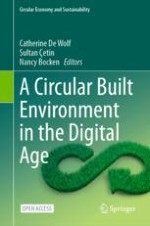8.1 Introduction
8.1.1 What Is Cooperative Robotic Behaviour?
8.1.2 Broad Applications
-
The agricultural industry has seen major adoption of automation technologies in recent years (Lytridis et al. 2021) and specifically in cooperative robotic setups for foraging and picking tasks for various fruits and vegetables (Ahlin et al. 2017; Ling et al. 2019; Sarabu et al. 2019; Sepulveda et al. 2020).
-
The automotive industry has a long history of being at the forefront of automation and is a leader in developing and utilising both CRF and Co-CRF technologies (Michalos et al. 2010) for tasks such as welding (Papakostas et al. 2011; Pellegrinelli et al. 2017; Wu et al. 2000) and panel assembly (Connolly 2009).
-
In heavy industry such as ship building and bridge construction, a dual-arm robot coupled with a hoist mechanism has been proposed to handle heavy workpieces (Shinohara et al. 2001).
8.2 Cooperative Robotic Fabrication in the Built Environment
8.2.1 CRF at the Material Scale
8.2.2 CRF at the Product Scale
8.2.3 CRF at the Building Scale
8.3 Cooperative Robotic Fabrication for a Circular Economy
8.3.1 Narrow
8.3.2 Slow
8.3.3 Close
8.3.4 Future Applications
8.4 Examples of Cooperative Robotic Fabrication for a Circular Economy
8.4.1 LightVault
8.4.2 Remote Robotic Assemblies Workshop
8.4.3 ZeroWaste
8.5 Discussion
8.6 Key Takeaways
-
In a cooperative robotic fabrication setup, the robotic agents are specifically coordinated to accomplish tasks that would not be possible if the robots were working alone.
-
Multiple robots can be sequenced to place or remove structural components while alternating temporarily supporting the structure, performing material handling, or data acquisition operations.
-
Primary resource inputs in the form of scaffolding and temporary support can be removed during construction when using a cooperative robotic fabrication setup.
-
Disassembly and reuse of existing buildings is made possible when using a cooperative robotic fabrication setup.
